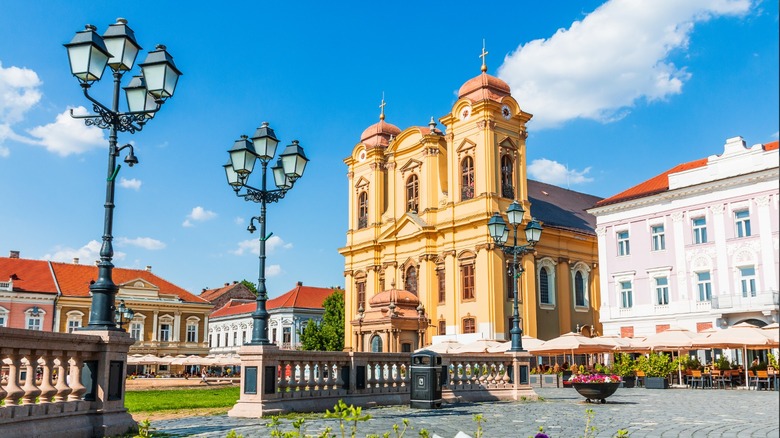Timisoara
Timișoara is the start of our Transylvania road trip. It’s close to Romania’s western border, with easy access from Hungary or Serbia, and boasts an international airport. But whether you cross the border or fly in, we highly recommend exploring this underrated European city before hitting the road.
Although it’s one of the country’s largest cities, Timișoara doesn’t have a touristy feel. Instead, it carries that lively, local vibe that’s harder to find, making it a great place to experience Romanian culture. The city has hosted several festivals, including the Timișoara Jazz Festival and the Timișoara Craft Beer Festival. If you don’t make it to either, you can still visit one of the colorful town squares to watch street performers and buskers take the stage. To mingle with others, grab a craft brew at Timișoreana Beer.
You also won’t want to miss the historic city center, which features a mix of Baroque, Art Nouveau, and Renaissance architecture. Some of the top attractions include Piața Unirii, Piața Victoriei, and Maria Theresia Bastion. For street art by renowned Romanian and international artists, visit the underground passage at Iulius Town. And, of course, don’t leave town without snapping that Insta-worthy photo under umbrellas at Strada Alba Iulia.
Alba Iulia
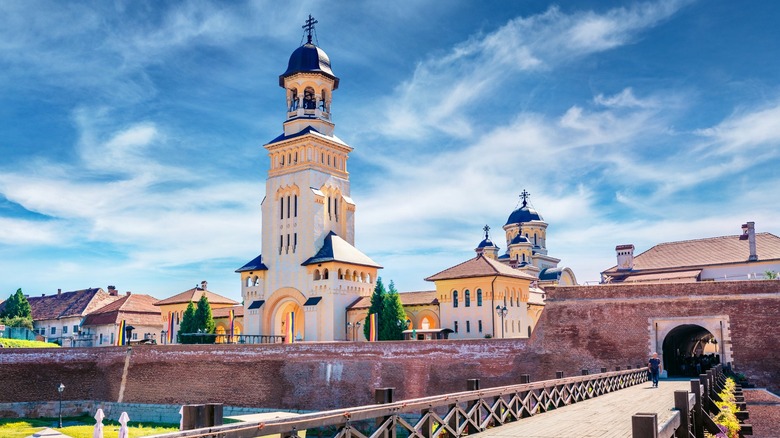
About 2.5 hours east of Timișoara is Alba Iulia. This small town isn’t on many people’s radar, but its old-world charm is hard to beat. After all, it is a medieval fortress that dates back to the Roman Empire. The fort is surrounded by massive walls that enclose a walled-in historic center, only accessible by crossing a bridge. And once you cross over, you’ll feel transported to a whole different era. However, you’ll have to leave your car on the other side; the fortress is a pedestrian-only zone — and motorized vehicles didn’t exist in Roman times, anyway!
Once inside, wander the cobblestone streets lined with quaint shops, cafes, and restaurants. One notable place is PUB 13, which offers a unique dining experience as it is built into the fortress wall itself. The restaurant used to be a gunpowder storage area, and now, it’s a modern-meets-medieval restaurant serving traditional Romanian cuisine.
After you’ve eaten your fill, walk it off through town. Check out street performers, artisans, and vendors, or time your visit to watch the changing of the guard. This area also has several museums and landmarks, including the National Museum of the Union, the Orthodox Cathedral, and The Union’s Hall. These attractions provide a glimpse into the city’s rich history and culture, including its role in Romania’s unification. Overall, Alba Iulia is a history buff’s dream and a place where Romania’s past comes alive.
Cluj-Napoca
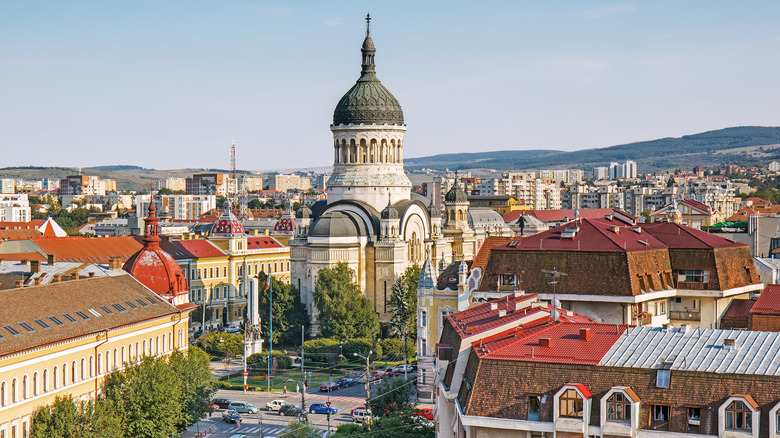
Pani Garmyder/Shutterstock
Cluj-Napoca is a bustling university town, and its vibrant and youthful atmosphere is reflected in its many cafes, craft breweries, and funky eateries. For coffee or a cocktail, stop by the cozy Sisters cafe. For more drinks or a full meal, visit the world’s first kinetic steampunk bar, Enigma. But eating and drinking aren’t the only forms of entertainment. The city also hosts several popular music festivals, including Electric Castle and Untold, as well as the Transylvania International Film Festival.
For some fresh air after your drive, there are several outdoor attractions. According to Babeș-Bolyai University, the city’s Botanical Garden has about 10,000 plant species and a beautiful greenhouse, and the open-air ethnographic museum showcases traditional Romanian architecture and culture. Walk by the Palace of Justice or St. Michael’s Church, a stunning Gothic-style church that dates back to the 14th century. For a leisurely afternoon, Central Park has a lake, picnic areas, and bike rentals.
Hoia-Baciu Forest
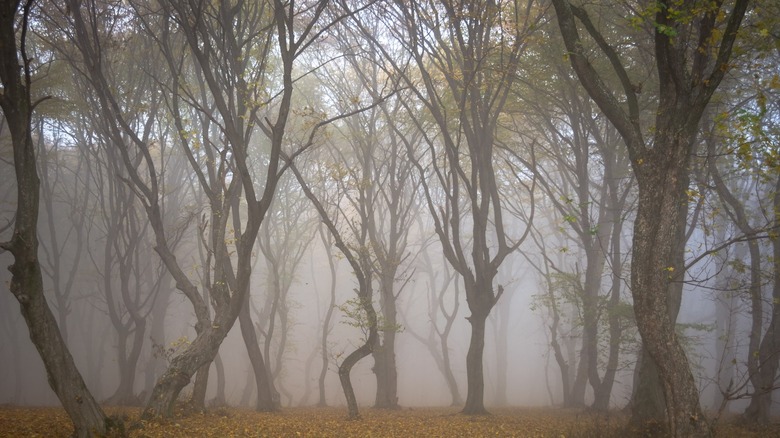
Daniel Marian/Shutterstock
On the surface, Hoia Forest is really just that — a beautiful forest. But the abnormally crooked plants and a circular patch devoid of trees tell a different story. As legend has it, a shepherd named Hoia Baciu and his flock of 200 sheep disappeared into the forest, never to be seen again. Although this occurred over a century ago, there has been significant paranormal activity ever since, making it one of the world’s most haunted forests.
Nicknamed “the Bermuda Triangle of Romania,” this place was home to many unexplained apparitions and ghost sightings. But according to the Independent, this haunted forest truly shot to fame in 1968 when military technician Emil Barnea snapped a photo of a UFO-like figure above the clearing. More recently, Alex Dan, a tour guide and founder of the Hoia Baciu Project, told ABC News that on one of his visits, “he came across a group celebrating spirits that are well-known in Romania folklore. They told me they were trying to harvest energy from other dimensions.”
Although many locals avoid the area, the forest’s eerie reputation has become a hotspot for adventurous tourists and paranormal enthusiasts. However, rumor is that many people experience strange sensations in the woods or leave feeling sick. So enter at your own risk — and bring that camera to capture proof of any unusual sightings.
Salina Turda
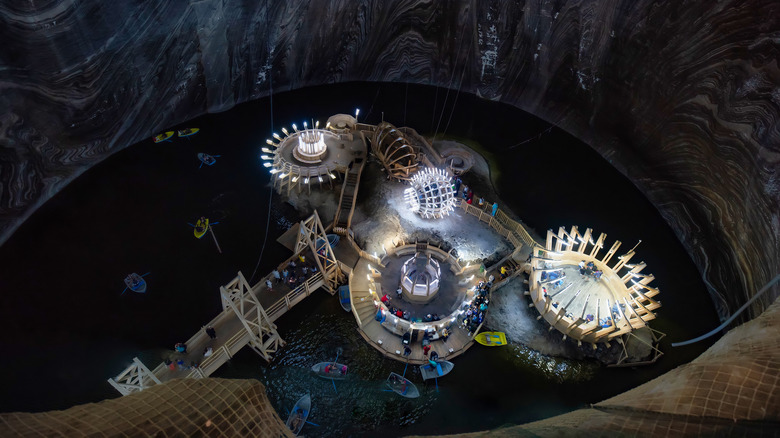
Haidamac/Shutterstock
After the spookiness of Hoia Forest, some lighthearted fun is in order — and what better destination than a salt mine, right? In this case, fun is most certainly the right word because Salina Turda is an old salt mine converted into an amusement park. The outside is underwhelming, but wait until you head down the hallway and board the glass elevator. You’ll slowly descend 393 feet underground, observing the fantastically enormous cavern as you go. There’s nothing quite like this place, with its salt-brimmed walls and cooler-than-average temperatures that merit a sweater even in summertime.
Once you step off the elevator, you’re greeted by an indoor playground with minigolf, bowling, amusement rides, and more. Take in the view of the small but spectacular lake, or better yet, canoe around it yourself. Ride the Ferris wheel for an even better vantage point, or visit the salt mine’s museum to learn about its history. If you’d rather be pampered than play, visit the onsite spa and wellness center for the ultimate relaxation. Salina Turda is genuinely a one-of-a-kind attraction, and luckily, it’s open to visitors year-round.
Biertan
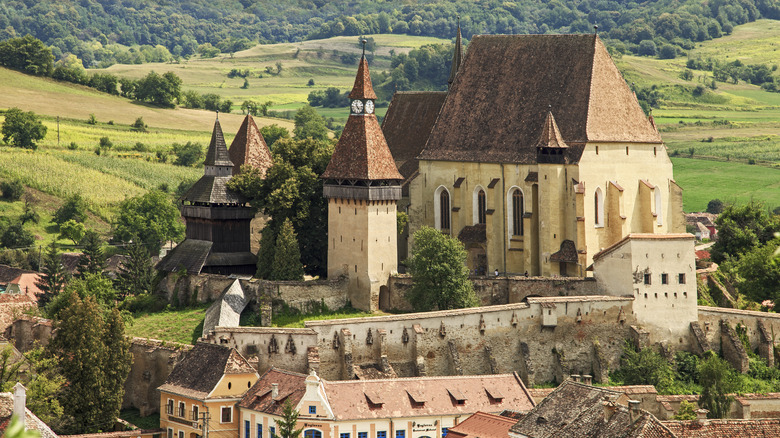
alpinetrail/Shutterstock
Biertan is a charming town with cobblestone streets and colorful houses. There are several restaurants where you can try traditional Romanian dishes and drinks, such as sarmale (stuffed cabbage rolls) and țuică (a strong fruit brandy). You can also visit the local museum to learn more about the town’s history and culture. However, Biertan’s main attraction is its impressive fortified church, which is a UNESCO World Heritage Site.
The church was built in the 15th century and features intricate stonework, a magnificent altar, and a unique mechanical clock. You can sit in one of its pews adorned with original artwork or snap a picture in front of the large protected doorway, which is particularly special because it has a locking system made up of 19 bolts that can be secured simultaneously by turning a single key.
However, one of the most unique experiences in Biertan is visiting the town’s famous “divorce room.” This room was used by couples who wanted to get divorced in the 18th and 19th centuries. Locals believed that locking them up together for two weeks would make them reconsider their decision. We’re not quite sure this methodology would work nowadays, but you can still visit the room and even take a photo with the original lock used to seal couples inside. And if you’re on the outs with your partner, perhaps a visit here will revitalize your spirits and refresh you for the drive ahead.
Sighisoara
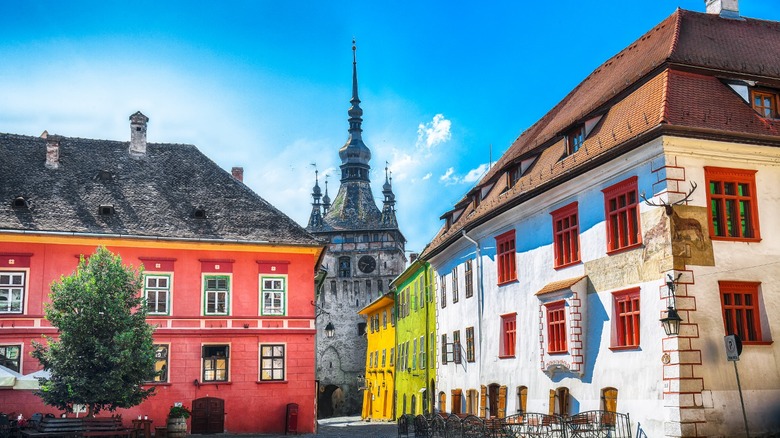
Pilat666/Getty Images
Sighişoara is Europe’s last inhabited citadel — and an incredibly charming one. It was built in the 12th century by the Saxons, who were skilled craftsmen and brought their trades along with them. Aside from developing the economy, these craftsmen also defended the fortress and built 14 towers representing each of their trades. Nine of these towers remain and are best visited on a long walk. After all, everything in the historic center is within walking distance, and the best way to soak in this city’s atmosphere is by roaming its streets.
Cobbled alleyways weave throughout the walled city, lined with colorful houses. It’s a photographer’s paradise, and you can explore the fortress by visiting the clock tower, the covered staircase, and other Gothic-style buildings. You can also see the birthplace of Vlad the Impaler, the inspiration for Bram Stoker’s “Dracula.” Be aware that Romanians have a playful nature, and you might stumble upon a vampire hiding within Dracula’s home.
A big part of Sighişoara lies in its traditions. If you get lucky, you may hear the town crier call out important events along with his drum. Every July, this city also hosts a Medieval Festival to celebrate its history. Even if you visit outside the festival, this picturesque city is so well-preserved it’s like stepping back in time.
Brasov
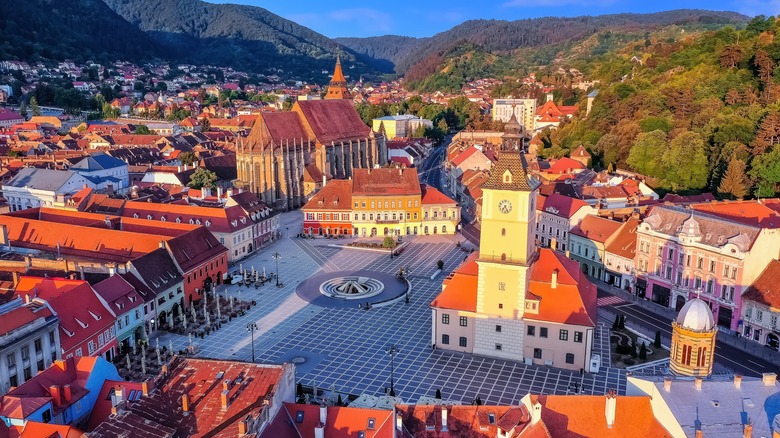
SCStock/Shutterstock
Brașov is a Romanian city with a quintessential town square, Piața Sfatului. This is the perfect place to soak up authentic local vibes, grab a coffee, and admire the beautiful architecture. In the summer months, there are outdoor concerts, markets, and other cultural events here. Although less bustling in winter, you can grab a cup of mulled wine and a freshly baked chimney cake to keep you warm.
If you’re looking for exercise after your drive, hike up Tâmpa Mountain. If that’s too ambitious, take the cable car instead. And if you prefer an adrenaline rush, paraglide high above the city. After building up that appetite, treat yourself to a traditional meal paired with local wine at Casa Tudor and a walk down Strada Sforii, one of the narrowest streets in Europe.
With multiple accommodation options, Brașov makes a great place to stay overnight. And if you prefer to take things slowly, make it your base for a few days and visit the next two stops on day trips instead.
Râsnov Fortress
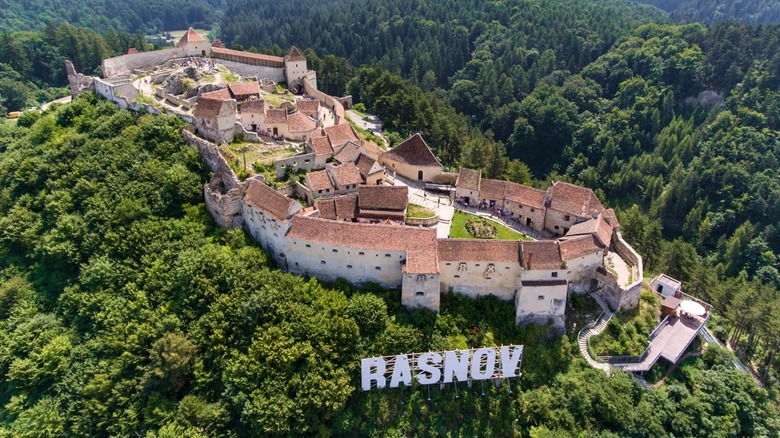
Calin Stan/Shutterstock
Râșnov Fortress sits on a rocky hilltop about 650 feet above town with impressive views of the surrounding landscape. The fortress dates back to at least the 13th century and was built by the Teutonic Knights to defend against invading Tartars. However, it was later taken over by locals.
Visitors can explore the fortress’s maze of corridors, rooms, and courtyards and learn about its fascinating past. Some highlights include the well-preserved defense walls, the main gate, and the impressive towers. The tower windows perfectly frame the Carpathian Mountains, creating that perfect Instagrammable image. Walking around, you’ll find many vendors dressed in medieval garments selling souvenirs. Albeit a tad cheesy, it’s a throwback to the time in which this fortress was in use, and if you want to learn even more about its history, visit the small museum on-site.
Unfortunately, the fortress has been closed for renovations for some time. We’re not sure when its gates will open, but you can check the Romania Tourism website in advance. If you can’t enter the fortress itself, you can always enjoy the exterior gardens and views from the outside.
Bran Castle
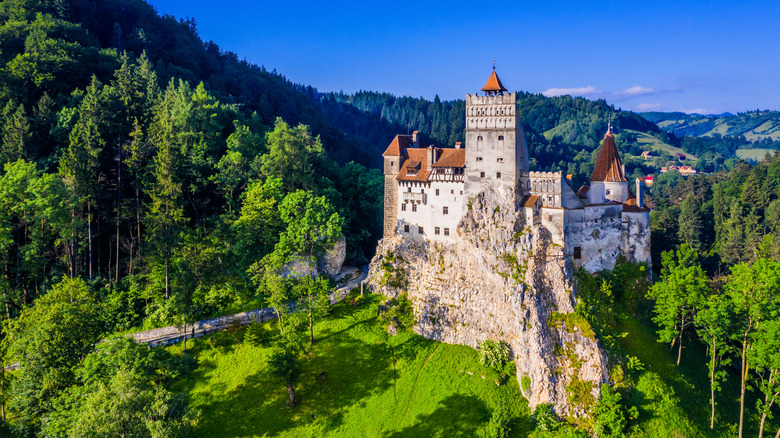
SCStock/Shutterstock
No visit to Transylvania is complete without seeing Bran Castle, just 20 minutes from Râșnov. Bran Castle is famously known as the home of Count Dracula and is steeped in history and folklore. The castle is a stunning example of Gothic architecture and has been restored to its former glory. Visitors to Bran Castle can take a guided tour and explore the castle’s many rooms, which are filled with furniture, art, and artifacts from different periods. You can also learn about the castle’s fascinating history and connection to Vlad the Impaler, the inspiration for Bram Stoker’s “Dracula.” The castle also hosts several cultural events, and if you’re visiting in late October, plan to attend their epic Halloween party. There’s nothing quite like partying in Dracula’s house with the legend himself.
If you’ve had your fair share of castles, the area has several other attractions, including the Bran Village Museum, which provides a glimpse into traditional Romanian life. The streets outside the castle have several markets selling local handicrafts. When it comes to food, one of the most popular restaurants is the nearby Bran Parc, which offers a variety of Romanian dishes, including mici (grilled minced meat rolls). If you want something sweet, try the local dessert, papanași, a fried doughnut served with sour cream and jam.
Transfagarasan Highway and Bâlea Lake
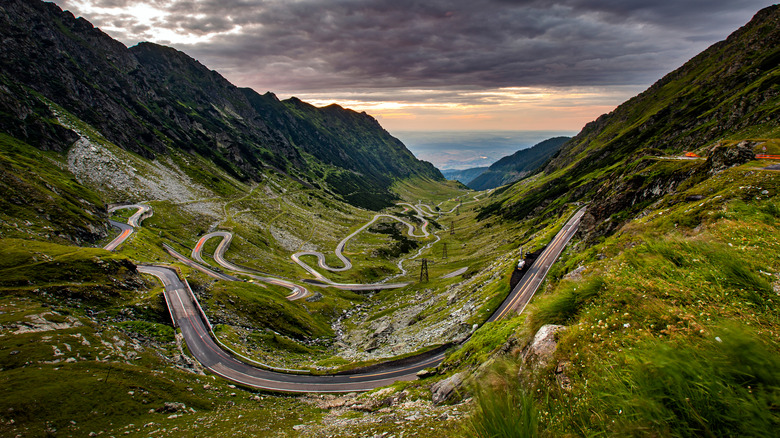
Angyalosi Beata/Shutterstock
Standing at the viewpoint of the Transfăgărășan Highway, you’ll be absolutely blown away — and not only by the powerful wind. It’s one of the most spectacular highways in the world, with its winding roads and stunning mountain views. It was built in the 1970s as a strategic military route but is now open to the public. You can drive down this curvy road, but remember that a portion is often closed during winter due to heavy snowfall.
One of the highlights of the Transfăgărășan Highway is Bâlea Lake, located at one of the highest points. The lake is surrounded by breathtaking scenery and is popular for hiking, camping, and skiing. To get to Bâlea Lake, drive up the Transfăgărășan Highway and park at the Balea Lake Chalet. From there, you can hike to the lake or take a cable car. The road is closed in the winter, but you can still reach the lake by taking the tram from the Balea Waterfall parking lot.
Hotel of Ice
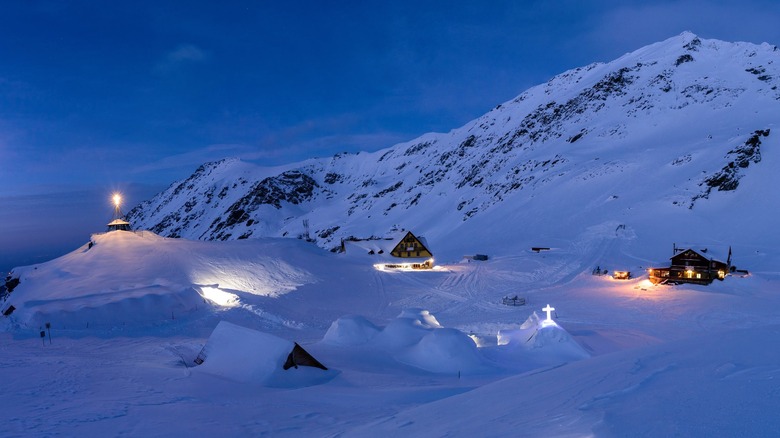
Hotel of Ice Romania/Facebook
This seasonal stop is just as it sounds — an ice hotel! In winter, local craftspeople pack ice blocks to create igloo-like structures into a chapel, hotel, and bar. If you’re already stopping at Bâlea Lake, you’re almost there. You just need to take a cable car from the Bâlea Lake parking lot to the Ice Hotel. You can also hike if you’ve brought the right gear.
Once you arrive at the Hotel of Ice, you can enjoy spectacular views of the Făgăraș Mountains and Bâlea Lake. Check out the ice sculptures, drink at the ice bar, or try winter sports like snow hiking, sledding, or tubbing. You can only visit from December to April, depending on weather conditions. After all, this ice hotel doesn’t exist in warmer seasons but makes a beautiful European winter getaway. Reservations are required, but if you manage to snag a room here, you can wake up to an epic winter wonderland.
Sibiu
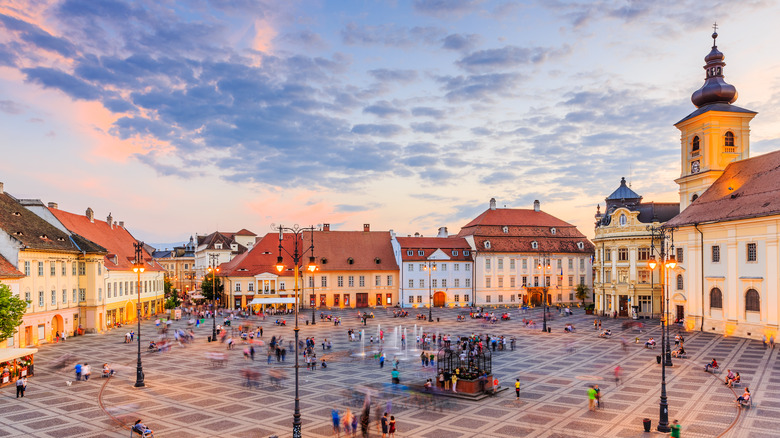
SCStock/Shutterstock
By now, you’re probably noticing some common themes in Transylvania: mountains, stunning architecture, and a rich culture. Sibiu lives up to all these Romanian stereotypes, which is why it is often named one of the most idyllic places to live in Europe. Here, the colorful houses are said to have eyes because of an architectural style where attics have two slivered windows.
One of the main attractions in Sibiu is its historic old town. The old town is home to several well-preserved buildings and landmarks, including the Brukenthal Palace, which houses a museum of art and history, and the Council Tower, which offers stunning city views from the top. For offbeat tourism, visit the Pharmacy Museum for a peek into the region’s medicinal history. To simply sit back and people-watch, grab a coffee at Piața Mare.
If traveling with a less-than-trustworthy companion, stroll across the quaint Bridge of Lies. Legend has it that if you tell a lie while crossing the bridge, it will collapse. Ask the most revealing questions, and see if your travel partner passes the test.
Corvin Castle
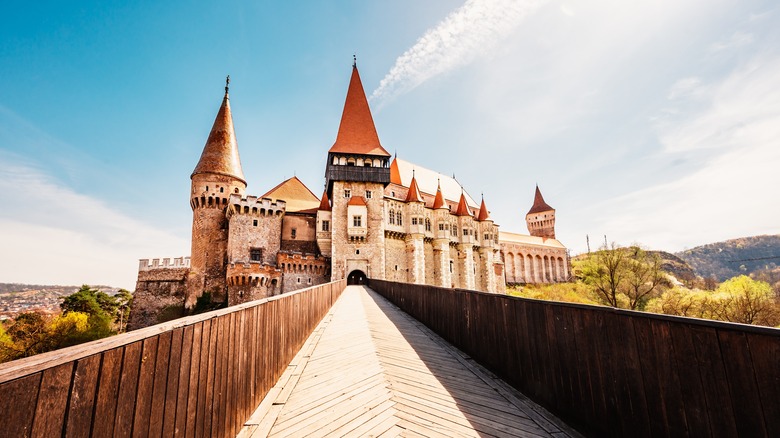
zedspider/Shutterstock
We hope you’re not castled-out because our final stop before returning to Timișoara is one of the most enchanting castles in Europe. Corvin Castle, also known as Hunyadi Castle, is in Hunedoara. This 15th-century fortress boasts a unique mix of architectural styles, including Gothic, Renaissance, and Baroque.
The castle has been restored to its former glory and is now open to the public for tours. You can explore its many rooms and chambers, including the Knight’s Hall, the Chapel, and the Torture Chamber. You can also walk along the castle’s ramparts and take in the stunning views of the surrounding countryside.
Corvin Castle offers a fairytale ending to this Transylvanian road trip. As you exit the long drawbridge and head back to Timișoara, you can reminisce on all those majestic memories from your time here. Pick a rose and a thorn from your trip — but with such beautiful scenery and culture, we’d bet the majority of your experiences in Romania were nothing but rosy.

